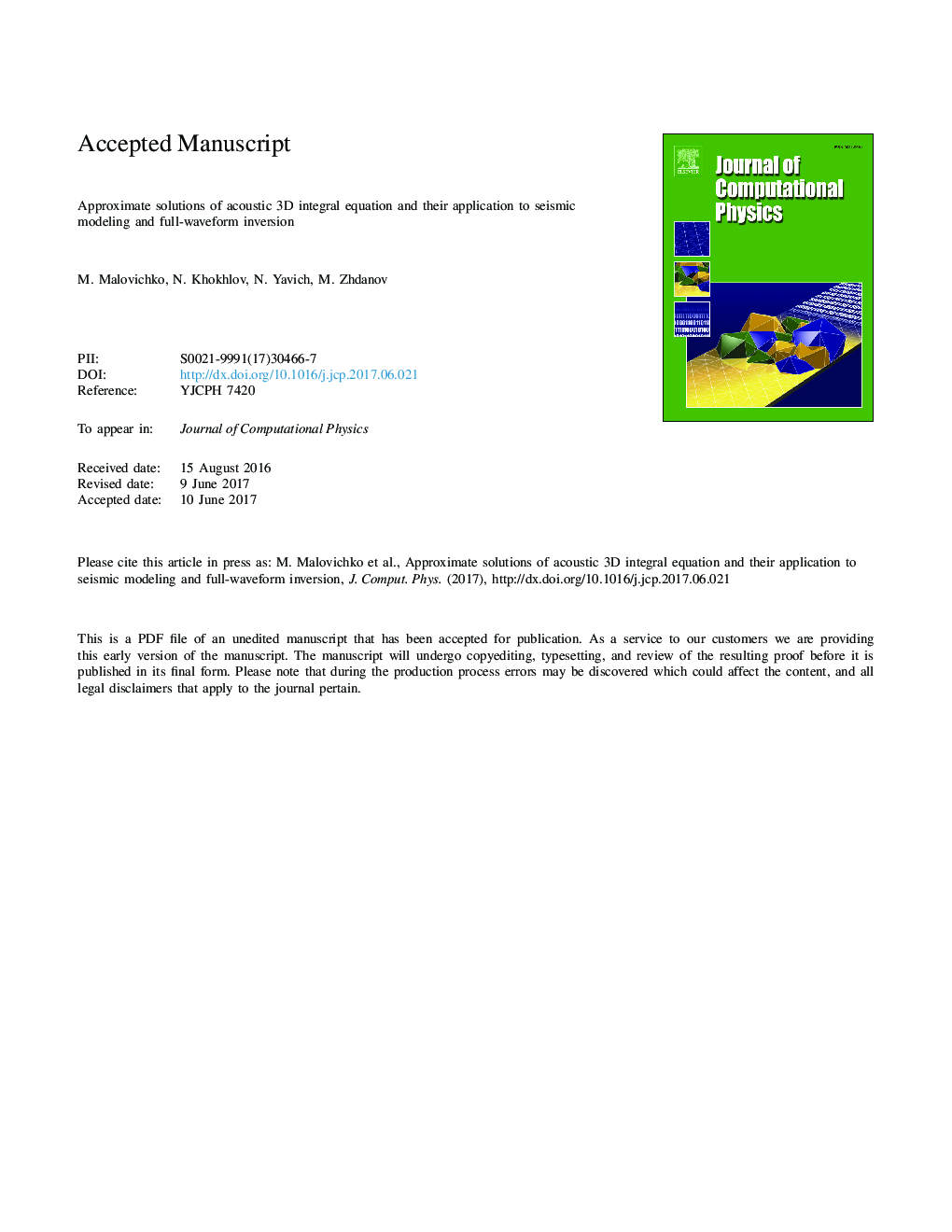| Article ID | Journal | Published Year | Pages | File Type |
|---|---|---|---|---|
| 4967262 | Journal of Computational Physics | 2017 | 34 Pages |
Abstract
Over the recent decades, a number of fast approximate solutions of Lippmann-Schwinger equation, which are more accurate than classic Born and Rytov approximations, were proposed in the field of electromagnetic modeling. Those developments could be naturally extended to acoustic and elastic fields; however, until recently, they were almost unknown in seismology. This paper presents several solutions of this kind applied to acoustic modeling for both lossy and lossless media. We evaluated the numerical merits of those methods and provide an estimation of their numerical complexity. In our numerical realization we use the matrix-free implementation of the corresponding integral operator. We study the accuracy of those approximate solutions and demonstrate, that the quasi-analytical approximation is more accurate, than the Born approximation. Further, we apply the quasi-analytical approximation to the solution of the inverse problem. It is demonstrated that, this approach improves the estimation of the data gradient, comparing to the Born approximation. The developed inversion algorithm is based on the conjugate-gradient type optimization. Numerical model study demonstrates that the quasi-analytical solution significantly reduces computation time of the seismic full-waveform inversion. We also show how the quasi-analytical approximation can be extended to the case of elastic wavefield.
Related Topics
Physical Sciences and Engineering
Computer Science
Computer Science Applications
Authors
M. Malovichko, N. Khokhlov, N. Yavich, M. Zhdanov,
